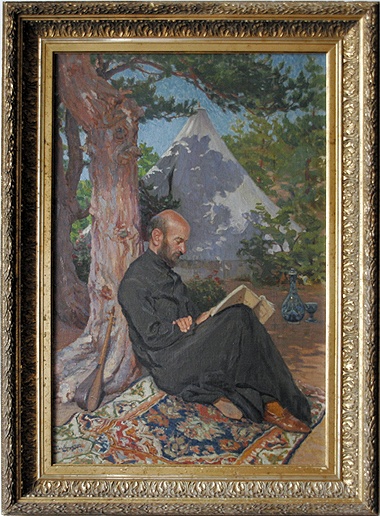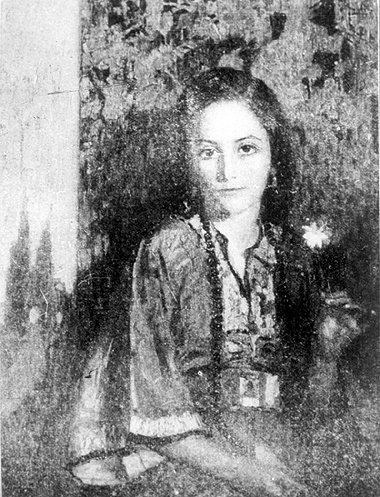Zhanna Bagdasarov
Editor

Dr. Levon Chookaszian, the sixth Henry S. Khanzadian Kazan Visiting Professor in Armenian Studies at Fresno State, presented the first of his three-part lecture series at 7:30PM on September 27.
Dr. Chookaszian is visiting from Armenia, where he is the UNESCO Chair of the Department of Art History at Yerevan State University. There, he spent several years as a professor of Armenian Art at the Center for Armenian Studies, while continuing to conduct research and publish extensively. During his prolific career he has authored more than 200 articles and reviews for scholarly journals and newspapers, as well as numerous entries for encyclopedias. Currently, Dr. Chookaszian is teaching a course which focuses on the Armenian art during the late 19th and early 20th century, and of the Armenian Genocide of 1915.
Dr. Chookaszian’s first lecture, entitled “The Armenian Painters of Constantinople at the turn of the 19th and 20th Centuries,” commenced with a short overview of the role Armenian artists played in Constantinople. He explained that the Armenian people, both artists and those involved in minor arts, were always active in Constantinople, yet the 19th century proved to be an especially productive period for them. It is during this time that existing documentation provides evidence of financial compensation for the Armenian painters.

by Melkon Kebabdjian
Painters who received recognition at this time were also sometimes involved in diplomatic services; many spent time in Vienna occupied with political issues. This was chiefly due to the high levels of education received by most of these individuals.
This general introduction to the lecture was followed by a thorough analysis of various artists and their contributions to the richness of Armenian art. Dr. Chookaszian provided an in-depth look at many painters and their artwork, while managing to captivate the audience with the beautiful slideshow of various paintings. Artists such as representatives of the Manasse family, Melkon Diratzouyan, Simon Hagopian, and Garabed Atamian, all left a legacy that is scarcely remembered by today’s generation.
One of the painters whose works were presented and described actually lived in Fresno for a part of his life. Panos Terlemezian, a rebel and one of the organizers of the self-defense of Van, featured the composer Komitas in many of his works. Perhaps one of his paintings may hang today in a house in Fresno.

Hovsep Pushman (1877-1966) was another creative artist of his time, who was most active in America and even succeeded in selling his paintings during the Depression period. Most of his works are characterized by a mystery; they usually involve darkness and tend to bring about contemplation on the part of the audience.
Many others were mentioned during this hour-long lecture, yet it was the work of Melkon Kebabdjian that fascinated me. This work, entitled “To the Memory of Unburied Armenians,” depicts gravestones embedded in the sky. Dr. Chookaszian explained that this represented those Armenians who were never properly buried, having their resting places in heaven. It was almost impossible to see this painting and not have it elicit any emotions.
This lecture provided a rare look at Armenian artists whose works led to progress during the 19th and 20th centuries in Constantinople. Since this was the first of Dr. Chookaszian’s lectures, many more interesting and rarely discussed topics will be covered in his future lectures. Dr. Chookaszian’s next lecture, “Armenian Massacres and Genocide and the Liberation Movement as Reflected in Armenian Art,” will be held on Wednesday, October 18 at 7:30 PM in the Alice Peters Auditorium of the University Business Center on campus.
 Hye Sharzhoom Armenian Action
Hye Sharzhoom Armenian Action